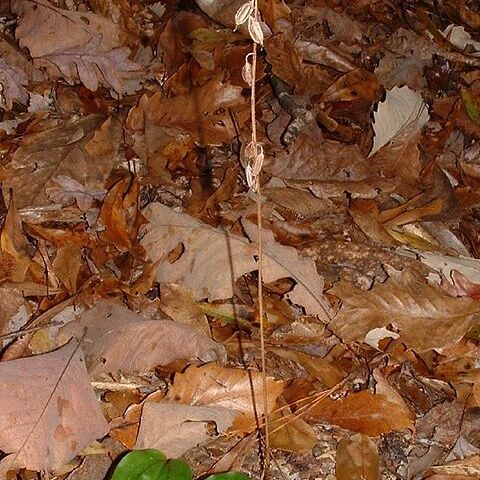Herbs, terrestrial. Roots 3–10, from bases of newer corms, spongy. Stems produced in summer, solitary, subapical, opposite leaf, arising from ovate, angular corms. Leaves produced in autumn, persisting over winter, withering in spring, solitary; blade broad, ovate, pleated. Inflorescences lax racemes. Flowers resupinate, bilaterally asymmetric; lip with long, free basal spur; column slightly arcuate; anther terminal, deciduous but retained on pollinaria for short time; pollinia 4, in 2 pairs, yellow, attached to elastic caudicle 1 mm with basal viscidium; stigma entire; rostellum a 2-fid flap enclosing viscidium. Fruits capsules, pendent, ovoid. Seeds 0.5–0.6 mm.
Sep and lateral pet similar, narrowly oblong or oblanceolate; lip 3-lobed, the lateral lobes basal, short and rounded, upturned, the terminal lobe long and slender; lip prolonged at base into a long, slender, horizontal spur; anther terminal on the column, with 2 pollinia; perennial herbs with a series of corms connected by short rhizomes, the youngest corm producing a single lf in autumn and then the next summer (after the lf has withered) an achlorophyllous, lfless scape bearing a few sheathing scales toward the base and a long, loose, bractless terminal raceme. 3, the others in e. Asia.

